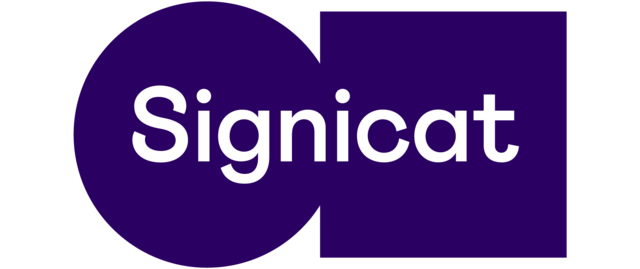giosg Signicat

Info
This functionality is only available as separately sold product. Please contact us at sales@giosg.com in order to get more information.
Overview¶
giosg Signicat is a separately sold product, which allows our Customers to use Signicat identification. This means that you can reach a wider audience and provide your services more efficiently and conveniently.
Signicat introduction¶
Signicat authentication product allows you to verify the identity of users who log in to your online service(s). This is done by using electronic identity methods (ID methods). Integrating with Signicat gives you access to a hub of European ID methods through a single point of integration.
Prerequisites¶
Customer account must have Interaction Builder and Workflow Builder enabled and giosg script added to the website giosg - How does the v2 giosg script work.
...
Authentication¶
- Log into the Signicat Dashboard
- Create an OIDC client in Signicat Dashboard
- In the Redirect URI field, enter
https://signicat.giosgapps.com/identification/v2/auth/callback - Create a client secret. You'll need it later to create Signicat configuration in Giosg App settings.
- In client settings > Advanced > Security set:
- User Info Response Type: SignedAndEncrypted
- Content encryption algorithm: A128CBC-HS256
- Requries Secret: checked
- Requries Request Object: checked
- Create 2 key pairs, you'll need private keys for GiosgApp configuration. Go to client settings > Advanced > Public keys add 2 keys:
- Usage: Signing
- Usage: Encryption
Reference/demo Signicat implementation¶
Signicat demo at giosgdemo.com
Setting up Signicat¶
Install Signicat App¶
At first Giosg Signicat Identification Connector (id: 6055779c-78aa-11ee-9add-0242ac120008) app must be shared from Giosg Integrations and Apps account to Customer account. This is done by giosg. After this, you can find app as part of the Settings -> Apps.
After the installation, you should be able to configure your first Signicat setup:
| Field | Description |
|---|---|
| Configuration ID | Automatically generated id |
| Name | Name of this configuration. Should be something which clearly defines the usecase. |
| Client ID | Cliend_Id from Signicat OIDC client |
| Signing Method | Default value is portal:ftn-auth |
| Signicat Host | The “Issuer URL for Client” given by Signicat, e.g. mycompany.app.signicat.com/auth/open |
| Scopes | openid profile nin |
| Authentication Success Workflow | Uuid of the workflow which is called after successfull identification |
| Authentication Fail Workflow | Uuid of the workflow which is called after failed identification |
| Client Secret | Cliend secret from Signicat OIDC client |
| Private Encryption Key | Private encryption key generated by Signicat |
| Private Signing Key | Private signing key generated by Signicat |
Configure interaction¶
Signicat identification is activated from interaction. This interaction can be opened to the page or it can be sent by the chat agent during chat conversation.
Before chat identification example¶
Example interaction (account id: 2455)
Interaction has following custom js action configure to the button, which starts the identification:
1 2 3 4 5 6 7 8 9 10 11 12 13 14 15 16 | |
| Parameter | Description |
|---|---|
| config_id | This defines which Signicat environment is used |
| referrer_url | (Optional) Return url after identification. If this field is missing, default page will be used |
| identifier | Unique identifier for the user/session, which is passed to the workflows without changing the content. This could be for example chat_uuid & visitor_uuid. |
In-chat identification example¶
Example interaction (account id: 2455)
Custom JS action on the button, which starts the identification:
1 2 3 4 5 6 7 8 9 10 11 12 13 14 15 16 17 | |
Configure workflows¶
Following workflows can be used as reference for the Customer specific workflows (account id: 2455):
Succesfull authentication workflow will receive following trigger payload:
1 2 3 4 5 6 7 8 9 10 11 12 13 14 15 | |
Failed authentication workflow will only receive indentifier and locale parameters as payload:
1 2 | |
Info
If you're using custom 'referrer_url' in your interaction, workflows should populate 'referrer_url_hash' variable. This variable is added to original 'referrer_url' provided by interaction.
Used domain(s)¶
giosg Signicat integrations uses signicat.giosgapps.com. See Giosg's Domains and IP addresses document for extra information.
Additional info¶
Please contact us at support@giosg.com in order to get more information.